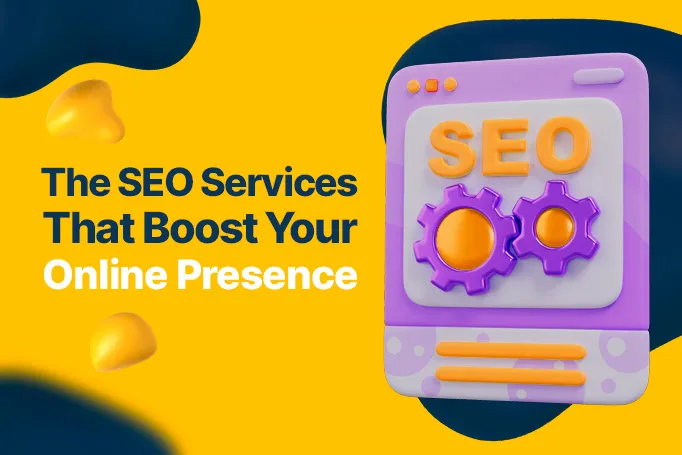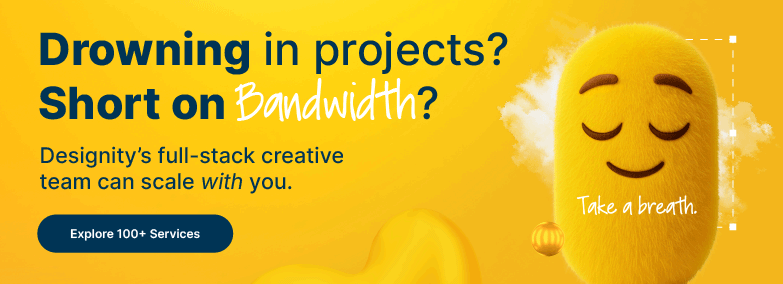These days, if your website isn’t ranking on the first page of Google’s search results, you might as well be invisible.
It’s a harsh truth, but in today’s Internet-first world, that’s just the reality of it.
So, how can you make sure your business isn’t swept into Google’s dustbin, lost in a huge sea of search results? By optimizing your site and content for SEO (search engine optimization)!
Whether you’re looking to increase traffic, generate more leads, or establish your brand as the industry leader you know it is, the right SEO strategy is the secret weapon you need. But SEO is a complicated field, and with so many moving parts, where do you even start?
No worries, friend. That’s where professional SEO services come in.
If you’re wondering what these SEO pros do and the kind of services they offer, then this blog is here to demystify the process. Today, we’re diving into the best professional SEO services available, exploring how they can boost your rankings, and showing you why partnering with the right SEO service provider is the key to your visibility and long-term success!
What are Professional SEO Services?
Professional SEO services are specialized services provided by SEO experts or SEO agencies.
These services involve a huge range of different strategies and techniques for increasing organic traffic and making sure the site is optimized for both search engines and users alike. Whatever strategies are used, the ultimate goal stays the same: improving a website’s visibility and ranking on search engines like Google.
The SEO Services You Need to Dominate Search Rankings
There are a variety of different SEO strategies and techniques that experts use to optimize for SEO, but we’ll start with the list below.
Check them out and see what services your website could benefit from the most!
1. On-Page SEO: Optimizing What Your Audience Sees

We’ll start with optimizing what your audience sees when they visit your website.
These are some of the most critical on-page SEO techniques, focusing on the elements your audience interacts with directly.
Content Optimization
Content optimization is the process of making your website’s text, images, multimedia, and content better positioned for search engines and users to find it highly relevant to their needs.
There are many steps to this process, so we’ll list them below:
- Keyword Research — Start out by using tools like SEMrush, Ahrefs, or Yoast to identify high-traffic, relevant keywords to target in your content. These words should be used in heads, web copy, and your content to help your website rank higher.
- Headers & Titles — Use clear and descriptive headers (H1, H2, etc.) to structure your content and improve readability.
- Image Optimization — Make sure all of the images used on your site are properly sized, compressed, and have relevant alt text.
- Content Quality — Trust us, the bots can tell. Be sure that all content featured on your website (blog posts, case studies, how-to guides, product descriptions, and any customer-facing content) is original and written to be engaging, informative, and valuable. Quality content not only helps with SEO but builds credibility and keeps your customers on your site longer (which also helps SEO!).
- Links — Use links in your content to guide users to related pages on your site or external sites. This improves navigation and SEO. Be sure to periodically check any external links to make sure that they still work and still link to relevant content.
Meta Tags and Descriptions
Meta tags and descriptions are elements in your website’s HTML code that provide a snapshot of what your page offers to search engines to help them understand and display your content in search results.
And while they don’t directly impact your rankings, they are crucial for helping you get clicks. A meta tag is the text that appears as the clickable headline in search results and a well-written meta description shows up as a quick summary of your page to encourage a user to click to learn more.
Here are some SEO copywriting techniques to keep in mind when writing your meta tags and descriptions:
- Both your meta description and titles should contain primary keywords to help your searchability.
- Keep the title tag under 60 characters.
- Write unique meta descriptions for each page with relevant keywords and a call-to-action.
- Make sure both are concise, clear, and accurately reflect your page’s content.
- Regularly update your meta tags to make sure they accurately reflect the content of your page and are in line with current SEO best practices.
URL Structure and Internal Linking
A well-structured URL and internal linking strategy help search engines understand the relationship between your website’s pages and also provide a better user experience for your visitors by guiding them through your site.
Here are some tips for optimizing your URL structure and internal linking:
- URL Structure — Use short, descriptive URLs that include your target keywords. Try not to use unnecessary words or special characters and keep it short and easy to read.
- Internal Linking —Connect related pages with anchor text that describes the linked page’s content. This helps distribute link authority and guides users to other relevant information on your site.
- Best Practices — Create a logical, hierarchical site structure that supports SEO and makes user navigation a breeze. All pages on your site should be easily accessible (within a few clicks) from the homepage and should have breadcrumbs to show the page’s location within your site. Be sure to regularly audit your internal links!
Important Note: These techniques should only be used for new pages on your website. Changing an existing URL that has already been indexed by search engines can negatively impact your SEO by losing backlinks and page authority, as well as creating broken links for any external links pointing to the old page. If a change is necessary, always set up 301 redirects from old URLs to the new ones to keep their SEO value.
2. Technical SEO: Optimizing Behind-the-Scenes

Now, it’s time for technical SEO.
Technical SEO focuses on the structure of your website to make sure that search engines can crawl, index, and rank your site effectively.
By optimizing these behind-the-scenes elements of your site, you can not only boost your website for search engine visibility, but make your website faster, more accessible, and easier to navigate for your visitors as well.
Below are some key technical SEO techniques to improve your website’s rankings and performance.
Site Speed
Site speed is how quickly your web pages load, both on a computer and on mobile.
And since nobody likes to use a slow-loading site, having a fast site not only provides a better user experience for them but is preferred by search engines, which consider speed a factor in how your page is ranked.
Here are some tips to speed up a sluggish website:
- Reduce Image Sizes — Compress images and use appropriate formats (like WebP) to minimize load times.
- Minify CSS, JavaScript, and HTML — Remove unnecessary characters and spaces from your code to reduce file size.
- Leverage Browser Caching — Allow browsers to store some files locally, so they don’t have to be downloaded again on returning visits.
- Use a Content Delivery Network (CDN) — Distribute your content across different servers to reduce latency and improve load times for users around the world.
Mobile Optimization
Being mobile-optimized means that your site's web design is designed to function well on mobile devices, providing your users with a positive experience no matter what screen size they’re viewing it on.
This is extremely important as more and more users are accessing online content via their smartphones. Google prioritizes mobile-friendly websites in its search results, so here are some tips to make your site as friendly as possible:
- Responsive Design — Use responsive design to ensure your website adapts to different screen sizes.
- Eliminate Flash Content — Flash is not supported on many mobile devices; use HTML5 instead.
- Optimize Touch Elements — Ensure buttons, links, and forms are large enough and spaced well for users to interact with easily on smaller screens.
- Improve Load Times — Minimize mobile load times by using techniques like lazy loading, where images load as the user scrolls.
XML Sitemap and Robots.txt
If this is the first time you’re hearing these terms, we’ll get you caught up:
XML Sitemap is a file that lists all the pages on your website. This helps search engines understand your site structure so they can index it more effectively.
Robots.txt is a file that tells search engines which pages to crawl and which pages to avoid, which helps to manage the crawling process.
Both are important for your SEO efforts and here’s how you can optimize them:
- Create an XML Sitemap — Use a tool or plugin to generate an up-to-date XML sitemap and submit it to Google Search Console to help search engines find and index your content.
- Optimize Your Robots.txt File — Make sure that your robots.txt file only blocks pages you don’t want to be indexed, like admin pages or duplicate content.
- Keep Your Sitemap Updated — Update your XML sitemap whenever you add or remove content to keep search engines informed.
3. Off-Page SEO: Building Authority and Credibility

While on-page SEO focuses on what’s on your site, off-page SEO strategies are all about building your website’s authority, trustworthiness, and relevance from the outside.
These techniques will help search engines recognize your site as a valuable and credible one, which will ultimately improve your rankings!
Here are some of the most effective off-page SEO strategies to boost your domain authority and your visibility.
Link Building
Link building is the process of gathering up high-quality backlinks (a hyperlink on one website that points to another) from other reputable websites.
These backlinks act as “votes of confidence” for your site from other sites, which signals to search engines that your content is valuable and trustworthy, something that can significantly boost your search engine rankings
Here are some advanced strategies to help your link-building efforts
- Guest Posting — Writing guest posts for reputable sites in your industry is great for not only providing quality backlinks but also boosting awareness and establishing authority and visibility. Focus on creating high-quality and relevant content that is tailored to your host site’s audience. Include a link back to your site within the content or the author bio (if applicable) to drive more traffic and score a valuable backlink. Be sure to target sites with high domain authority ratings to get the most out of your backlink.
- Public Relations (PR) Outreach — Use PR tactics to secure backlinks from sites like news outlets, industry publications, and influencer blogs. Creating press releases or pitching unique stories related to your brand can help you grab some media attention and get featured in reputable publications to boost your credibility and provide a high-authority backlink.
- Create High-Quality Content — Write informative articles, blog posts, and guides that other sites will want to link to in the first place. The more valuable your content, the more likely it is to naturally attract backlinks.
- Create Linkable Content — Content like infographics, step-by-step guides, case studies, or original reports and research that others in your industry would find valuable are great examples of linkable content. This type of content is highly shareable and is often linked to by other sites, which organically boosts your backlink profile.
- Broken Link Building — Use tools like Ahrefs and SEMrush to help you identify broken links on other websites. Then reach out to site owners and offer up your content as a replacement. This helps the site owner fix broken links and provides you with a valuable backlink. Win/win.
- Resource Page Link Building — Reach out to websites with resource pages related to your specific niche and offer to add your content as one of their resources. These pages are made up of valuable content and getting your site listed on one of them can provide you with high-quality backlinks.
- Build Relationships — Network with influencers, bloggers, and industry leaders. Building strong relationships can lead to more opportunities for collaboration and backlinks.
Social Media Marketing
It’s 2024 and everyone who’s anyone is on social media.
And while links on social media don’t impact your SEO directly, social media offers a way to reach millions of potential customers to promote your content, products, or services, and is an excellent way to drive traffic to your website.
Here are a few tips that you can use to optimize your social media link-building game:
- Share Content Consistently — Reach a wide audience by regularly sharing your blog posts, articles, and other content on social media platforms like LinkedIn, Twitter, Facebook, and Instagram.
- Engage with Your Audience — Respond to comments, participate in discussions, and engage with followers to build a loyal community around your brand.
- Collaborate with Influencers — Partner with influencers in your industry to amplify your reach and credibility. Influencers can also share your content with their followers, driving traffic and potential backlinks.
- Use Social Sharing Buttons — Make it easy for your website visitors to share your content on their social media platforms by adding social sharing buttons to your blog posts and articles.
4. Local SEO
Local SEO is the focus on optimizing your online presence to attract more business from local searches.
It’s a crucial strategy for brick-and-mortar businesses with physical locations or those who service specific geographic areas. If this describes your brand, then local SEO is definitely something you need to put some effort into. By improving your brand’s visibility in local search results, you can better connect with customers in your area who are already actively searching for the products or services you offer.
Here are some effective strategies to boost your local SEO and better position your brand to grab its share of the local market:
Google My Business
Google My Business is a free tool that lets businesses manage their online presence on Google and allows their business to show up on Google Search and Google Maps.
A well-optimized Google My Business profile is vital for physical stores and allows your business to pop up in local search results and the coveted “local three pack.”
Here are some tips to optimize it:
- Complete Your Profile — Make sure your profile is filled out with accurate business information, including your name, address, phone number, business hours, and website URL.
- Add High-Quality Photos — Upload images of your business, products, or services to give potential customers a better understanding of what you offer.
- Collect and Respond to Reviews — Encourage satisfied customers to leave positive reviews and make it a habit to respond to all reviews, whether positive or negative, to show you care about your customers' feedback.
Local Keyword Optimization
Local keyword optimization is the practice of sprinkling location-specific keywords into your website’s content to help search engines understand that your business has a geographic focus and make it easier for local customers to find you.
Here are some tips to help you get it done:
- Use Location-Based Keywords — Include your city or region in your titles, meta descriptions, headers, and throughout your content. For example, "plumbing services in Dallas" or "best coffee shop in NYC."
- Create Location-Specific Pages — If you serve multiple areas, consider creating separate pages for each location, with unique content targeting local keywords.
- Optimize for “Near Me” Searches — Include terms like “near me” in your content where relevant, as more users are searching for businesses in their immediate vicinity.
Local Citations and NAP Consistency
Local citations are mentions of your business name, address, and phone number (NAP) on other websites, especially online directories and social platforms.
NAP consistency means that your info is listed accurately and uniformly on every site it's mentioned.
Here’s how you can optimize:
- List Your Business on Directories — Submit your business information to reputable online directories like Yelp, Bing Places, Yellow Pages, and local business directories.
- Ensure NAP Consistency — Make sure your business name, address, and phone number are consistent across all listings. Even minor discrepancies can harm your local SEO efforts.
- Get Listed on Industry-Specific Sites — If applicable, list your business on industry-specific directories to increase your visibility within your niche.
Local Backlink Building
Local backlinks are links to your website from other local websites.
Like regular backlinks, these signal to search engines that your business is not only relevant but relevant to your specific community.
Here are some pointers on how to build local backlinks:
- Partner with Local Organizations — Sponsor local events, participate in community activities or collaborate with local charities and ask for a link back to your website.
- Join Local Business Groups — Join your local Chamber of Commerce or industry-specific groups and get listed in their member directories.
- Get Featured in Local Media — Reach out to local newspapers, blogs, and news websites to feature your business in articles or interviews, which can generate valuable local backlinks.
5. SEO Analytics and Monitoring: Measuring Your Success
Finally, to make sure your SEO efforts are paying off, you’ll need to make sure to continuously monitor and analyze your data.
By tracking your key metrics, you’ll be able to see what’s working, what’s not working, what needs more effort, and how you can adjust your strategy for better results. Here are the SEO analytics and monitoring services that a good SEO provider can do to help you measure your success and keep your SEO strategy on track.
SEO Audits
An SEO audit is a comprehensive evaluation of your website’s SEO performance.
The auditor will examine your on-page, technical, and off-page SEO; everything that is contributing to your current ranking. An audit from a reliable SEO agency can identify issues that might be preventing your site from ranking well in search engine results and help you come up with a plan to improve it.
Monitoring and Reporting
SEO monitoring and reporting involve tracking your website’s performance to gauge the effectiveness of your SEO strategies.
This usually includes monitoring your keyword rankings, traffic trends, backlink health, and other crucial KPIs. By understanding what strategies are working and what aren’t, you are better equipped to refine your SEO strategy and continually improve your website’s performance.
<div class="c-blog_comp-cta cc-component-1"><div class="c-blog_comp-cta-left"><div class="c-blog_comp-cta-left-wrap"><img src="https://global-uploads.webflow.com/61cdf3c5e0b8155f19e0105b/6369722e59155470b6840033_Potential-clients.png" loading="lazy" alt="" class="c-blog_comp-cta-left-img"></div></div><div class="c-blog_comp-cta-right"><div class="c-blog_comp-content"><div class="c-text-wrapper cc-mb-32"><div class="c-title-4 cc-bold"><strong>Want to save money without sacrificing the quality?</strong></div></div><div class="c-text-wrapper"><div class="c-text-2">Say goodbye to traditional, expensive agencies and unreliable marketplaces. Say hello to Designity.<br></div></div></div><div class="c-blog_comp-wrapper"><a href="/pricing" target="_blank" class="c-button cc-primary cc-inverted w-button"><strong>Get Your 2-Week Trial</strong></a></div></div></div>
Looking to Take Your SEO to the Next Level?
SEO is a complicated field, friend, and if you’ve come away from this article understanding that your online presence must be optimized … only you lack the experience, tools, and time to do it, then you’re not alone.
Many of the businesses that enjoy optimal search engine rankings can do so because they asked for help from a reliable SEO agency.
And SEO agencies aren’t cheap. For a reputable one, you can expect a retainer of $3,000 to $10,000 per month and per-project pricing of about $1,000.
It adds up.
Which is why we want to let you in on a little secret that can not only boost your search engine rankings but also help you save your budget:
Designity does more than just graphic design.
Our creative community is also filled with talented content writers, copywriters, SEO experts, digital markets, and more — everyone you need to audit your current SEO performance, identify areas for improvement, and create the optimized content you need to help you hit your goals and boost your brand’s visibility.
Why not check out our SEO services page and our recent SEO case studies to see how Designity’s SEO and content marketing strategies have been able to make a difference for brands just like yours?
And if our style vibes with yours, go ahead and book your demo call so we can get you started with your two-week, no-obligation trial so you can test-drive our services and see firsthand why Designity is the only design, copywriting, marketing, and SEO partner you’ll ever need.
Are you ready to take your SEO to the next level?
























